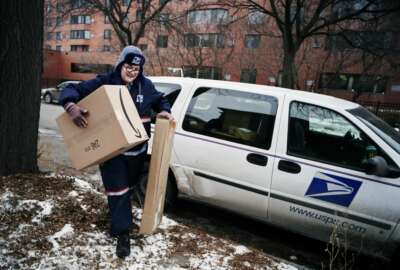
What is “Made in the U.S.A.” anyhow?
If you compute, you are dealing with an international supply chain, period.
A press release from Apple states the company will build its new Mac Pro in the Austin, Texas factory where it built the old model. That is, it won’t move production to China, as the company originally planned. That’s because Apple received waivers from tariffs on parts sourced in China.
The waivers came via the Office of the U.S. Trade Representative. But they’re really from President Trump. He and Apple CEO Tim Cook have been doing a tariff minuet for months.
Many companies have been applying for tariff relief. One published account described an importer of after-market automotive bits that filed 10,000 exemption requests, one for each component of each part. The Wall Street Journal reports that companies have filed 16,000 requests in total. Apple might be the most prominent. The machine in question is at the high end. It’s not out yet, but the old model starts at $2,999, but with upgrades can set you back more than $6,000.
Those thousands of dollars will be schmeared all over the world. There’s no such thing as a machine — car, truck, snowblower, refrigerator, motorcycle, computer or vacuum cleaner — with parts all from a single country. Well, maybe the Chinese brand CSC Motorcycles (but their tires are from Taiwan).
My new Mac mini will arrive soon. My existing one is more than nine years old. I’m pretty sure it was assembled somewhere in China.
My personal computing issue, before I got distracted by the Apple press release, is less about international sourcing than about dealing with my hybrid, multi cloud strategy. It’s beginning to feel a little like computer chaos.
The Mac I’ve been using since 2010 has a 320 gigabyte hard drive — still running fine but around two thirds full. I back it up to a local terabyte drive sitting on the desk. The intervening years have brought on a Google account with whatever storage that comes with. Plus a few dozen folders filled with documents in the Google cloud. Because so many people want to share things in Dropbox, somehow I ended up acquiring a Dropbox account. There’s also my Apple iCloud account, which has little on it because a password never seems to work from session to session.
The new Mac is the third successive mini I’ve used in my personal and freelance work. To the second one I simply moved all the files wholesale. But mini #3, which cost twice what the last one did, has less storage. Apple has gone to more-expensive solid state disk drives, so I opted for 256 gigabytes — mini #2’s drive contents will barely fit on mini #3’s drive. Clearly a lot of folders and pictures going back to 2007 will have to go to a cloud.
But which cloud? Who needs three cloud accounts anyhow? Even the Defense Department plans to award its Jedi contract to one cloud vendor.
Now I’m about to have a fourth cloud. Along with mini #3, I have purchased a Microsoft Office 365 family pack. It gives each user a cloud account for a terabyte of data. I thought it a little odd that, in ordering a Mac, Apple offers Microsoft 365 among the cables and other doodads you might need.
I’m planning to settle on the Microsoft cloud and put everything there. I could have gone to a paid Google account, but somehow I feel more comfortable with old Microsoft and its trusty Word.
Just as the U.S. maintains a strategic oil stockpile, I’m going to keep my local backup disk. I don’t know what Microsoft policies kick in if a credit card inadvertently expires, but I’ll keep insurance against the cloud repo man.
Copyright © 2025 Federal News Network. All rights reserved. This website is not intended for users located within the European Economic Area.
Tom Temin is host of the Federal Drive and has been providing insight on federal technology and management issues for more than 30 years.
Follow @tteminWFED






